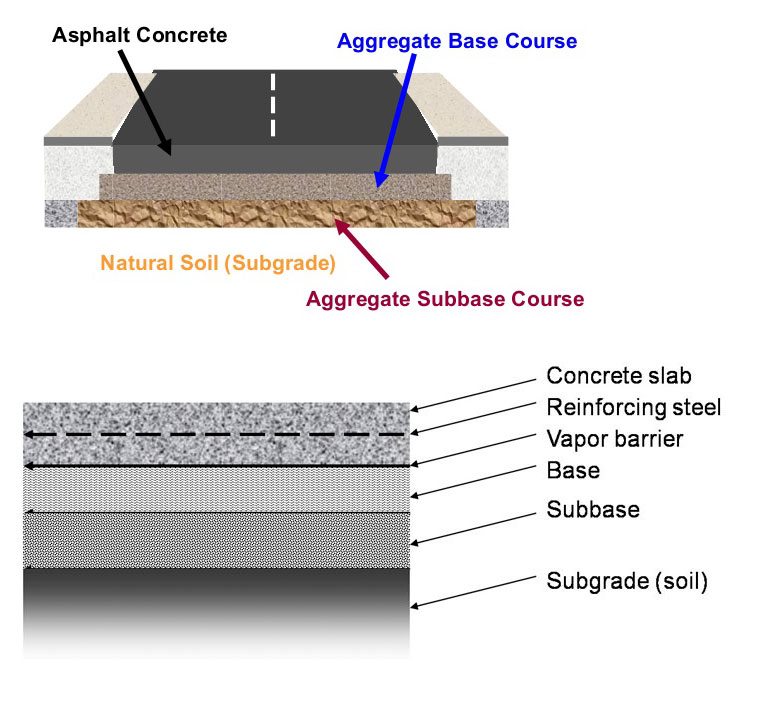
Variations among Wet, Moist, and Damp Subgrade

Subgrade is taken as the most vital element of the pavement structure as it functions as a foundation for other pavement elements which are developed upon it and resist detrimental influences of weather and various traffic loads.
The performance of subgrades is significantly impacted with unstable water content. Hence, it is essential to examine the behaviour of subgrade under several conditions. Under this condition, wet, moist, and damp subgrade are identified on the basis of the water quantity in the subgrade components.
The concerned engineers should have clear conceptions on the variations among wet, moist, and damp condition and how the strength of pavement structure is influenced by them. The bearing strength, shrinkage, and swelling of subgrade are mostly affected by the moisture content. Given below, the detail information about the variations among wet, moist, and damp subgrade.
Wet Subgrade
- As per ACI 116R-90, wet condition happens when the material comprises of apparent free moisture.
- It is the indication of maximum level of moisture.
- Wet subgrade is majorly damaged under loads.
- Wet subgrade tolerates severe swelling and shrinkage and due to this pavement deforms and cracks.
- Wet subgrade is not recommended for pavement construction. Therefore, so it should be upgraded with proper method.
- When the roads are built up on such subgrade devoid of correct advancement, then future maintenance work is necessary.
Moist subgrade
- As per ACI 116R-90, if the material is mildly coated with moisture, the moist condition occurs.
- There is mild moisture among wet and dump.
- Bearing strength performance is superior as compared to wet subgrade but lower than damp subgrade.
- Swelling and shrinkage of moist subgrade and flaws of pavement above occurs to some extent among damp and wet subgrade.
- It is suitable for pavement construction but a slight advancement is required.
- Less costly improvement is applied to get rid of future maintenance.
Damp subgrade
- As per ACI 116R-90, damp condition happens if the material is marginally dump but not gets dry to the touch Specifies lowest level of moisture.
- Damp subgrade functions well with regard to load bearing strength as compared to wet and moist subgrade.
- It is not affected with swelling and shrinkage significantly, and therefore the damage is not adequate to the pavement.
- It is ideal for pavement construction.
- It does not need any improvement and future maintenance is inexpensive.
To get more detail, go through the following link theconstructor.org


